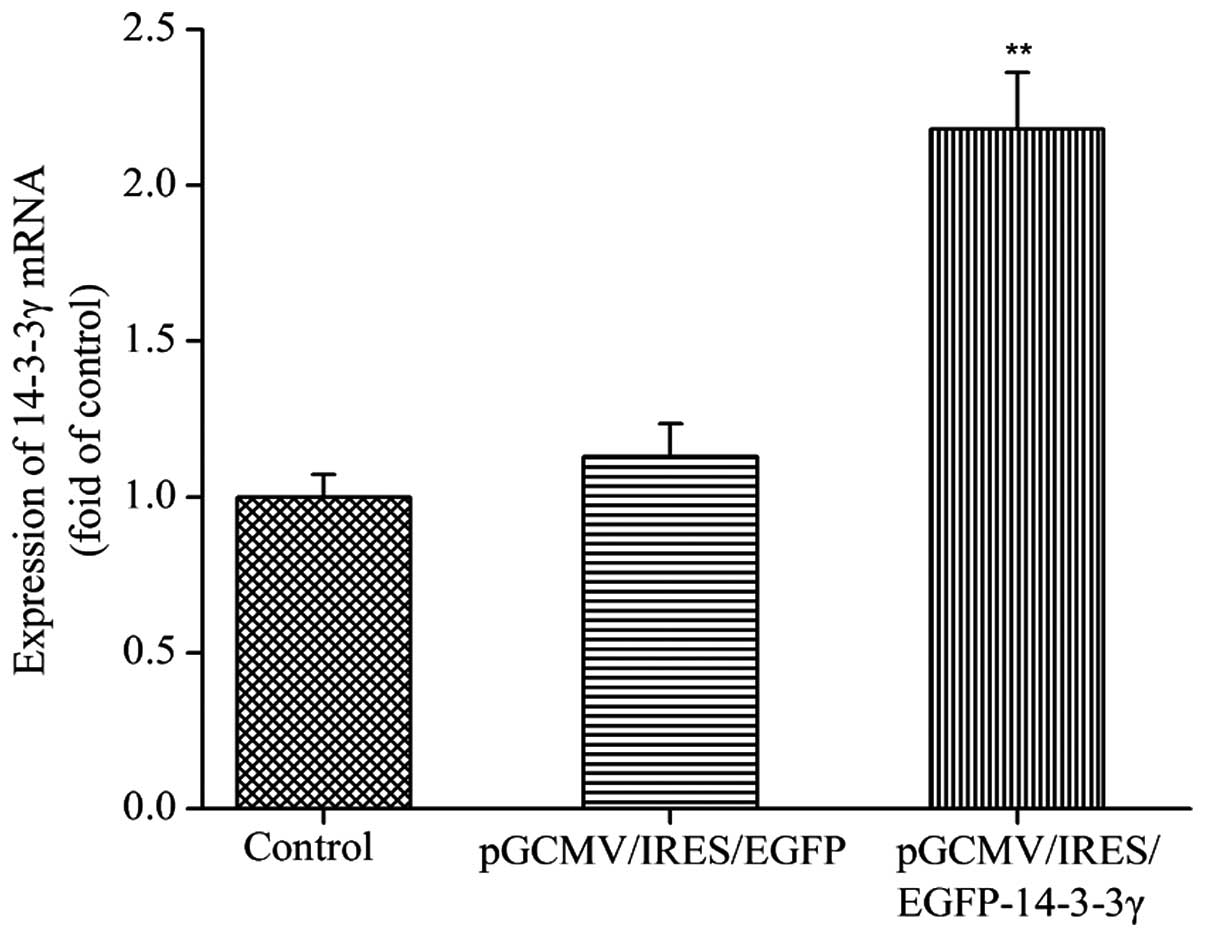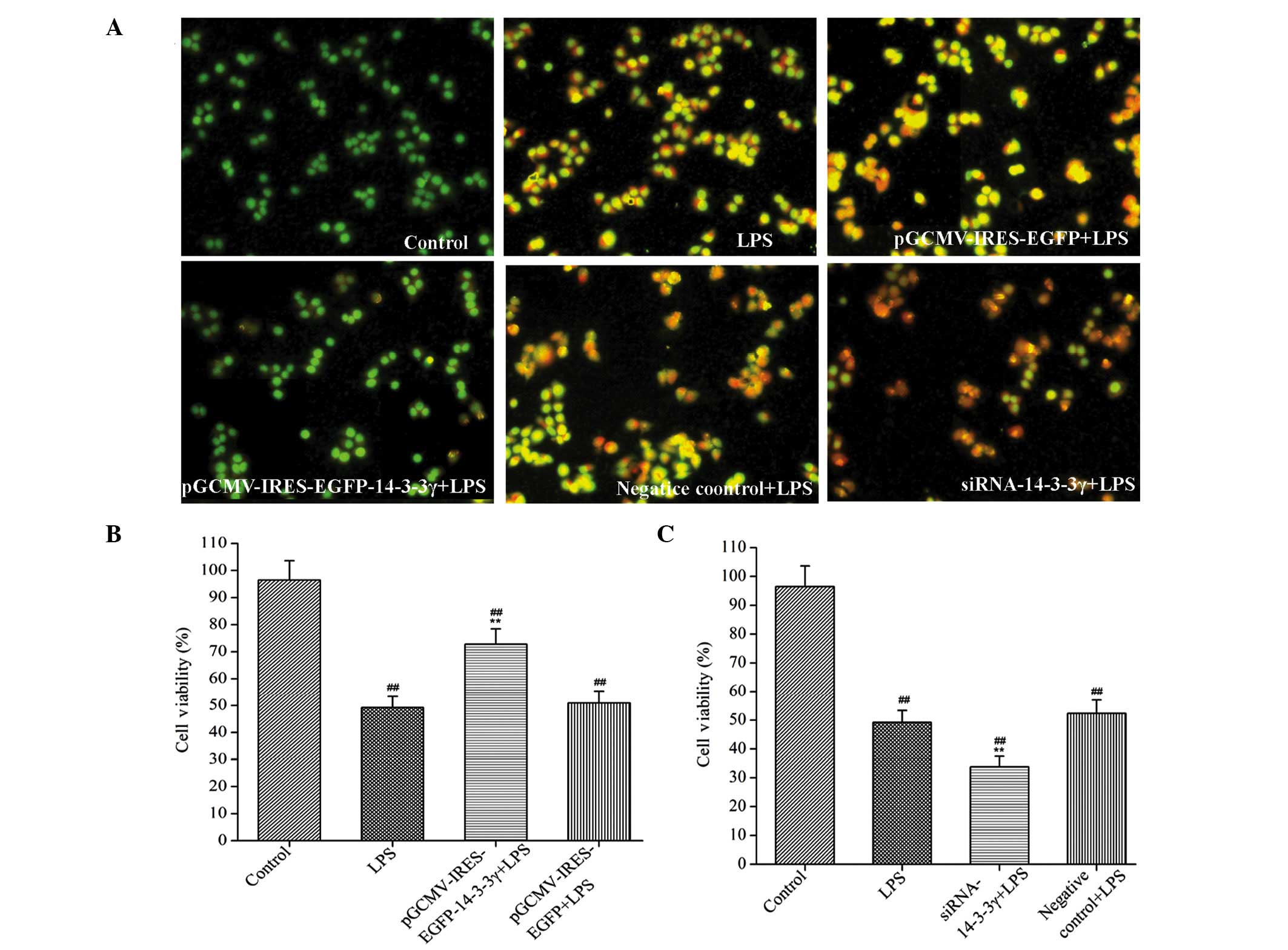|
1
|
Plaizier JC, Krause DO, Gozho GN and
McBride BW: Subacute ruminal acidosis in dairy cows: The
physiological causes, incidence and consequences. Vet J. 176:21–31.
2008. View Article : Google Scholar : PubMed/NCBI
|
|
2
|
Gozho GN, Krause DO and Plaizier JC:
Ruminal lipopolysaccharide concentration and inflammatory response
during grain-induced subacute ruminal acidosis in dairy cows. J
Dairy Sci. 90:856–866. 2007. View Article : Google Scholar : PubMed/NCBI
|
|
3
|
Waldron MR, Nishida T, Nonnecke BJ and
Overton TR: Effect of lipopolysaccharide on indices of peripheral
and hepatic metabolism in lactating cows. J Dairy Sci.
86:3447–3459. 2003. View Article : Google Scholar : PubMed/NCBI
|
|
4
|
Sweet MJ and Hume DA: Endotoxin signal
transduction in macrophages. J Leukoc Biol. 60:8–26.
1996.PubMed/NCBI
|
|
5
|
Zandi E, Rothwarf DM, Delhase M, Hayakawa
M and Karin M: The IkappaB kinase complex (IKK) contains two kinase
subunits, IKKalpha and IKKbeta, necessary for IkappaB
phosphorylation and NF-kappaB activation. Cell. 91:243–252. 1997.
View Article : Google Scholar : PubMed/NCBI
|
|
6
|
Ansari N, Khodagholi F, Amini M and
Shaerzadeh F: Attenuation of LPS-induced apoptosis in
NGF-differentiated PC12 cells via NF-kB pathway and regulation of
cellular redox status by an oxazine derivative. Biochimie.
93:899–908. 2011. View Article : Google Scholar : PubMed/NCBI
|
|
7
|
Ling B and Alcorn J: LPS-induced
inflammation downregulates mammary gland glucose, fatty acid, and
L-carnitine transporter expression at different lactation stages.
Res Vet Sci. 89:200–202. 2010. View Article : Google Scholar : PubMed/NCBI
|
|
8
|
Zebeli Q and Ametaj BN: Relationships
between rumen lipopolysaccharide and mediators of inflammatory
response with milk fat production and efficiency in dairy cows. J
Dairy Sci. 92:3800–3809. 2009. View Article : Google Scholar : PubMed/NCBI
|
|
9
|
Waggoner JW, Löest CA, Turner JL, Mathis
CP and Hallford DM: Effects of dietary protein and bacterial
lipopolysaccharide infusion on nitrogen metabolism and hormonal
responses of growing beef steers. J Anim Sci. 87:3656–3668. 2009.
View Article : Google Scholar : PubMed/NCBI
|
|
10
|
Zhang YD, Wang JQ and Hu T: Infusion of
lipopolysaccharide into external pudendal artery of lactating dairy
cows: Effects on milk composition and milk fat constituents. Dong
Wu Ying Yang Xue Bao. 23:1317–1323. 2011.
|
|
11
|
Liu L, Lin Y, Liu L, Bian Y, Zhang L, Gao
X and Li Q: 14-3-3γ regulates lipopolysaccharide-induced
inflammatory responses and lactation in dairy cow mammary
epithelial cells by inhibiting NF-κB and MAPKs and up-regulating
mTOR signaling. Int J Mol. 16:16622–16641. 2015. View Article : Google Scholar
|
|
12
|
López-Soriano FJ and Williamson DH: Acute
effects of endotoxin (lipopolysaccharide) on tissue lipid
metabolism in the lactating rat. The role of delivery of intestinal
glucose. Mol Cell Biochem. 141:113–120. 1994. View Article : Google Scholar : PubMed/NCBI
|
|
13
|
Hosing AS, Kundu ST and Dalal SN: 14-3-3
Gamma is required to enforce both the incomplete S phase and G2 DNA
damage checkpoints. Cell Cycle. 7:3171–3179. 2008. View Article : Google Scholar : PubMed/NCBI
|
|
14
|
Pozuelo-Rubio M: Proteomic and biochemical
analysis of 14-3-3-binding proteins during C2-ceramide-induced
apoptosis. FEBS J. 277:3321–3342. 2010. View Article : Google Scholar : PubMed/NCBI
|
|
15
|
van Hemert MJ, Steensma HY and van Heusden
GP: 14-3-3 proteins: Key regulators of cell division, signalling
and apoptosis. Bioessays. 23:936–946. 2001. View Article : Google Scholar : PubMed/NCBI
|
|
16
|
Huang JG: Proteomic analysis of the
lactation regulation in DCMECs treated with different hormones
(unpublished PhD thesis). Harbin, China: Northeast Agricultural
University. 2012.
|
|
17
|
Liu D, Yin D, Yan GH, Sun D, Xu M and He
M: Protective role of 14-3-3γ in burn and LPS-induced rat
myocardial injury. Zhong Guo Bing Li Sheng Li Za Zhi. 28:1160–1165.
2012.(In Chinese).
|
|
18
|
Liu D, Yin D, Sun D, Xu M and He M: The
Role of Bax in the 14-3-3γ protection against cardiomyocyte damage
induced by LPS. Tian Jin Yi Yao. 40:1222–1225. 2012.(In
Chinese).
|
|
19
|
Zhao K, Liu HY, Zhou MM and Liu JX:
Establishment and characterization of a lactating bovine mammary
epithelial cell model for the study of milk synthesis. Cell Biol
Int. 34:717–721. 2010. View Article : Google Scholar : PubMed/NCBI
|
|
20
|
Li HM, Wang CM, Li QZ and Gao XJ: MiR-15a
decreases bovine mammary epithelial cell viability and lactation
and regulates growth hormone receptor expression. Molecules.
17:12037–12048. 2012. View Article : Google Scholar : PubMed/NCBI
|
|
21
|
Lu LM, Li QZ, Huang JG and Gao XJ:
Proteomic and functional analyses reveal MAPK1 regulates milk
protein synthesis. Molecules. 18:263–275. 2012. View Article : Google Scholar : PubMed/NCBI
|
|
22
|
Zhang Q, Zhao XH and Wang ZJ: Cytotoxicity
of flavones and flavonols to a human esophageal squamous cell
carcinoma cell line (KYSE-510) by induction of G2/M arrest and
apoptosis. Toxicol In Vitro. 23:797–807. 2009. View Article : Google Scholar : PubMed/NCBI
|
|
23
|
Khafipour E, Krause DO and Plaizier JC: A
grain-based subacute ruminal acidosis challenge causes
translocation of lipopolysaccharide and triggers inflammation. J
Dairy Sci. 92:1060–1070. 2009. View Article : Google Scholar : PubMed/NCBI
|
|
24
|
Bruckmaier RM: Gene expression of factors
related to the immune reaction in response to intramammary
Escherichia coli lipopolysaccharide challenge. J Dairy Res.
72:120–124. 2005. View Article : Google Scholar : PubMed/NCBI
|
|
25
|
Cheng G, Zhao Y, Li H, Wu Y, Li X, Han Q,
Dai C and Li Y: Forsythiaside attenuates lipopolysaccharide-induced
inflammatory responses in the bursa of Fabricius of chickens by
downregulating the NF-kB signaling pathway. Exp Ther Med.
7:179–184. 2014.PubMed/NCBI
|
|
26
|
Reddy DB and Reddanna P: Chebulagic acid
(CA) attenuates LPS-induced inflammation by suppressing NF-kappaB
and MAPK activation in RAW 264.7 macrophages. Biochem Biophys Res
Commun. 381:112–117. 2009. View Article : Google Scholar : PubMed/NCBI
|
|
27
|
Wong PM, Chugn SW and Sultzer BM: Genes,
receptors, signals and responses to lipopolysaccharide endotoxin.
Scand J Immunol. 51:123–127. 2000. View Article : Google Scholar : PubMed/NCBI
|
|
28
|
Yang F, Sun X, Beech W, Teter B, Wu S,
Sigel J, Vinters HV, Frautschy SA and Cole GM: Antibody to
caspase-cleaved actin detects apoptosis in differentiated
neuroblastoma and plaque-associated neurons and microglia in
Alzheimer's disease. Am J Pathol. 152:379–389. 1998.PubMed/NCBI
|
|
29
|
Radhakrishnan VM and Martinez JD:
14-3-3gamma induces oncogenic transformation by stimulating MAP
kinase and PI3K signaling. PLOS One. 5:114332010. View Article : Google Scholar
|
|
30
|
Samuel T, Weber HO, Rauch P, Verdoodt B,
Eppel JT, McShea A, Hermeking H and Funk JO: The G2/M regulator
14-3-3sigma prevents apoptosis through sequestration of Bax. J Biol
Chem. 276:45201–45206. 2001. View Article : Google Scholar : PubMed/NCBI
|
|
31
|
Obsilova V, Silhan J, Boura E, Teisinger J
and Obsil T: 14-3-3 proteins: A family of versatile molecular
regulators. Physiol Res. 57(Suppl 3): S11–S21. 2008.PubMed/NCBI
|
|
32
|
Boutinaud M, Guinard-Flamenta J and Jammes
H: The number and activity of mammary epithelial cells, determining
factors for milk production. Reprod Nutr Dev. 44:499–508. 2004.
View Article : Google Scholar : PubMed/NCBI
|
|
33
|
Ametaj BN, Emmanuel DG, Zebeli Q and Dunn
SM: Feeding high proportions of barley grain in a total mixed
ration perturbs diurnal patterns of plasma metabolites in lactating
dairy cows. J Dairy Sci. 92:1084–1091. 2009. View Article : Google Scholar : PubMed/NCBI
|
|
34
|
Zebeli Q, Dunn SM and Ametaj BN:
Perturbations of plasma metabolites correlated with the rise of
rumen endotoxin in dairy cows fed diets rich in easily degradable
carbohydrates. J Dairy Sci. 94:2374–2382. 2011. View Article : Google Scholar : PubMed/NCBI
|
|
35
|
Mao SY, Zhang RY, Wang DS and Zhu WY:
Impact of subacute ruminal acidosis (SARA) adaptation on rumen
microbiota in dairy cattle using pyrosequencing. Anaerobe.
24:12–19. 2013. View Article : Google Scholar : PubMed/NCBI
|
|
36
|
Kleen JL, Hooijer GA, Rehage J and
Noordhuizen JP: Subacute ruminal acidosis (SARA): A review. J Vet
Med A Physiol Pathol Clin Med. 50:406–414. 2003. View Article : Google Scholar : PubMed/NCBI
|
|
37
|
Zu L, He J, Jiang H, Xu C, Pu S and Xu G:
Bacterial endotoxin stimulates adipose lipolysis via toll-like
receptor 4 and extracellular signal-regulated kinase pathway. J
Biol Chem. 284:5915–5926. 2009. View Article : Google Scholar : PubMed/NCBI
|
|
38
|
Ling B and Alcorn J: LPS-induced
inflammation downregulates mammary gland glucose, fatty acid, and
L-carnitine transporter expression at different lactation stages.
Res Vet Sci. 89:200–202. 2010. View Article : Google Scholar : PubMed/NCBI
|
|
39
|
López-Soriano FJ and Williamson DH: Acute
effects of endotoxin (lipopolysaccharide) on tissue lipid
metabolism in the lactating rat. The role of delivery of intestinal
glucose. Mol Cell Biochem. 141:113–120. 1994. View Article : Google Scholar : PubMed/NCBI
|
|
40
|
Pekala PH, Kawakami M, Angus CW, Lane MD
and Cerami A: Selective inhibition of synthesis of enzymes for de
novo fatty acid biosynthesis by an endotoxin-induced mediator from
exudate cells. Proc Natl Acad Sci USA. 80:2743–2747. 1983.
View Article : Google Scholar : PubMed/NCBI
|
|
41
|
Bionaz M and Loor JJ: Gene networks
driving bovine milk fat synthesis during the lactation cycle. BMC
Genomics. 9:3662008. View Article : Google Scholar : PubMed/NCBI
|
|
42
|
Yang Q and Li Y: Roles of PPARs on
regulating myocardial energy and lipid homeostasis. J Mol Med
(Berl). 85:697–706. 2007. View Article : Google Scholar : PubMed/NCBI
|
|
43
|
Wan Y, Saghatelian A, Chong LW, Zhang CL,
Cravatt BF and Evans RM: Maternal PPAR gamma protects nursing
neonates by suppressing the production of inflammatory milk. Genes
Dev. 21:1895–1908. 2007. View Article : Google Scholar : PubMed/NCBI
|
|
44
|
Anderson SM, Rudolph MC, McManaman JL and
Neville MC: Key stages in mammary gland development. Secretory
activation in the mammary gland: It's not just about milk protein
synthesis! Breast Cancer Res. 9:2042007.
|














